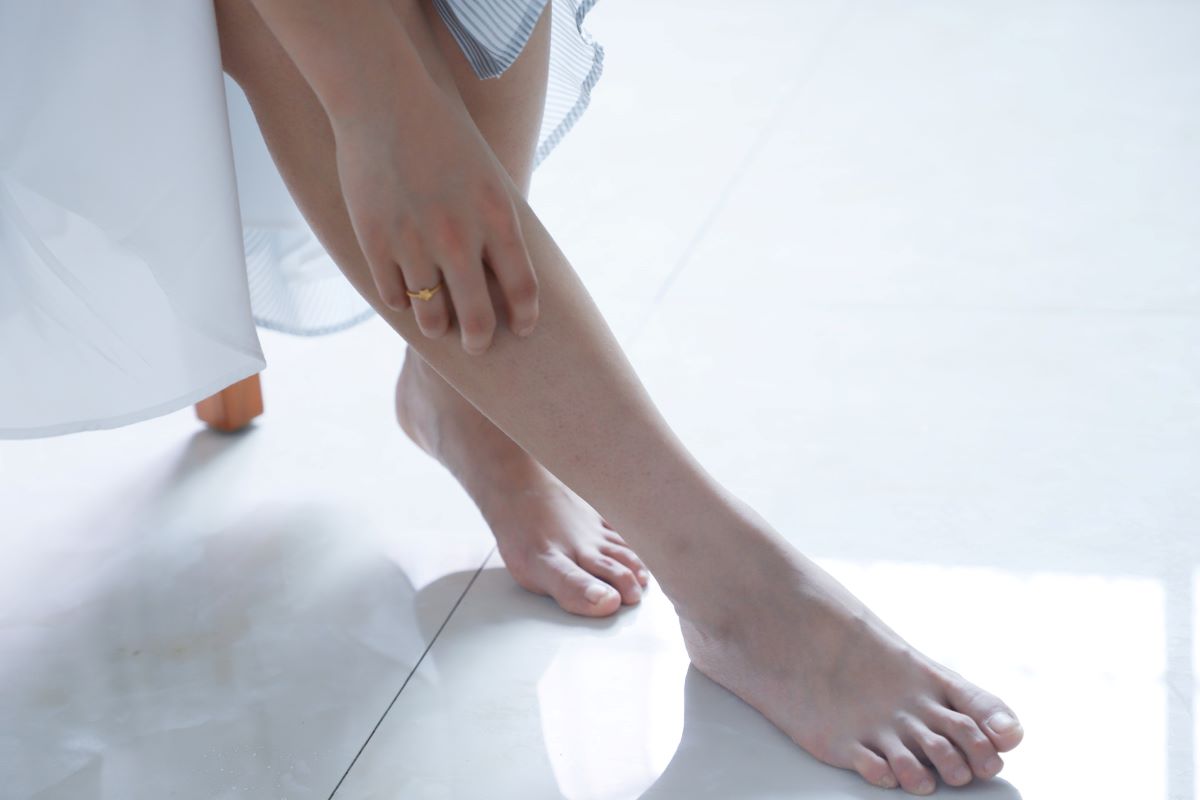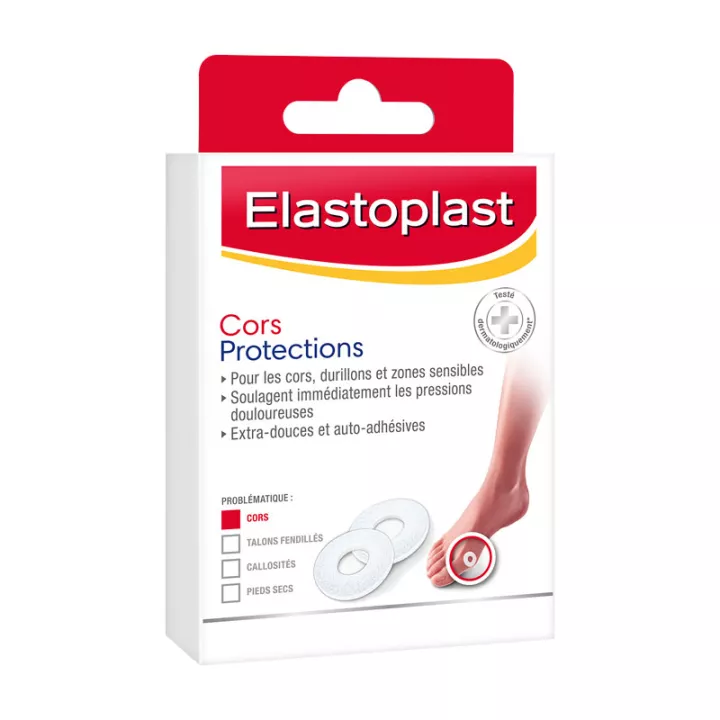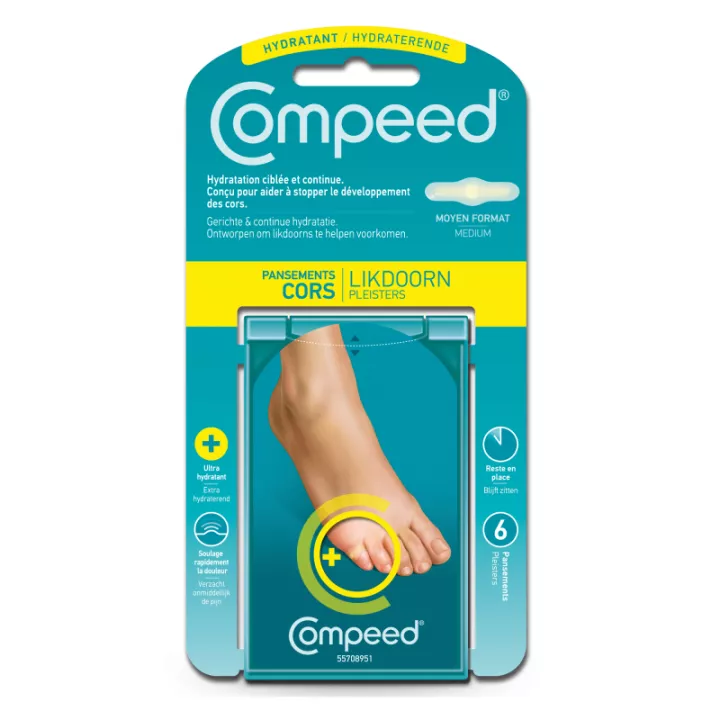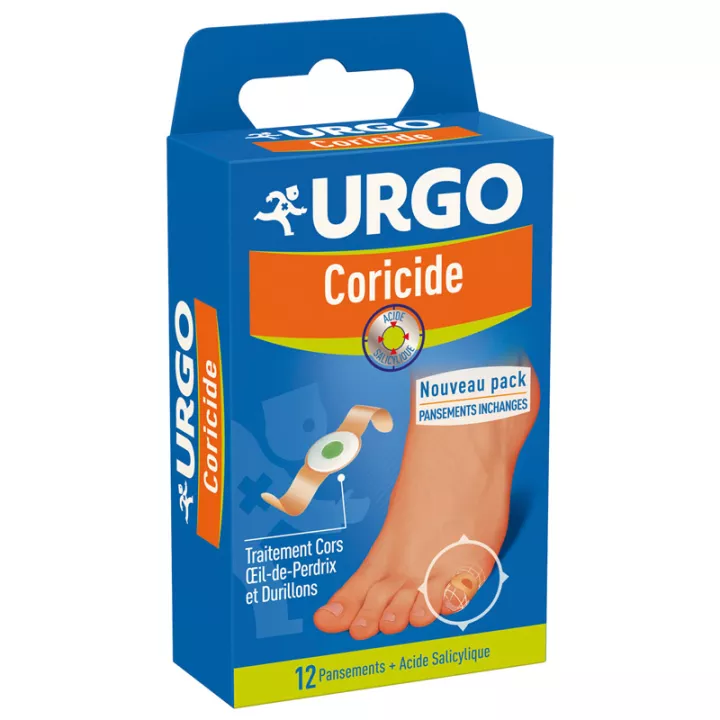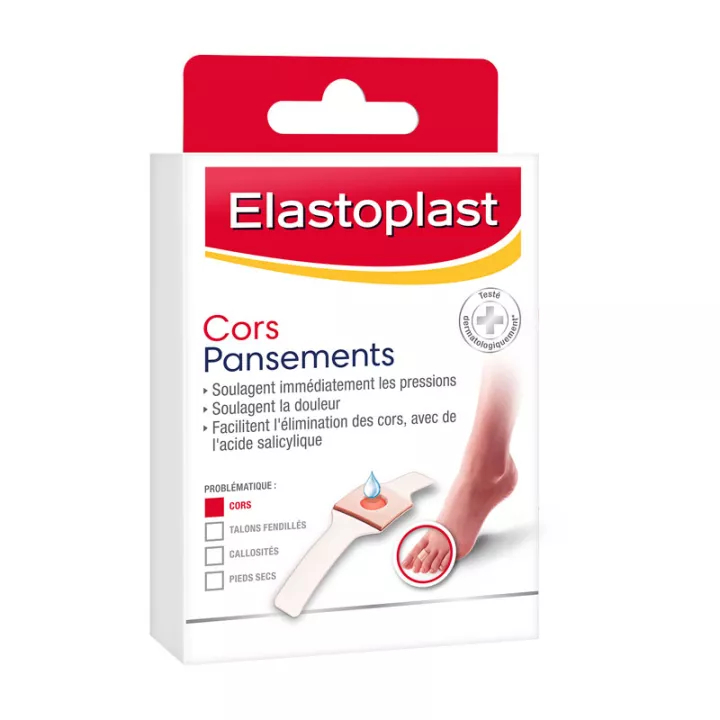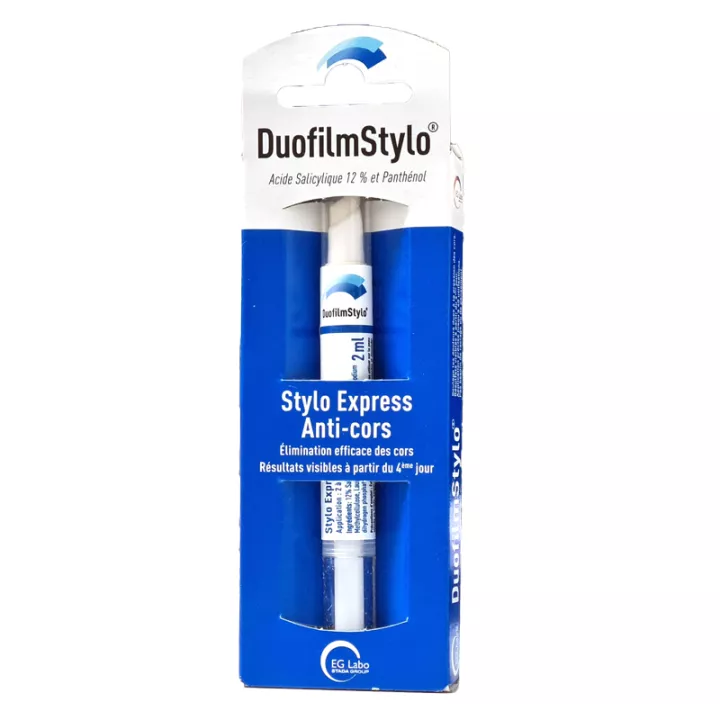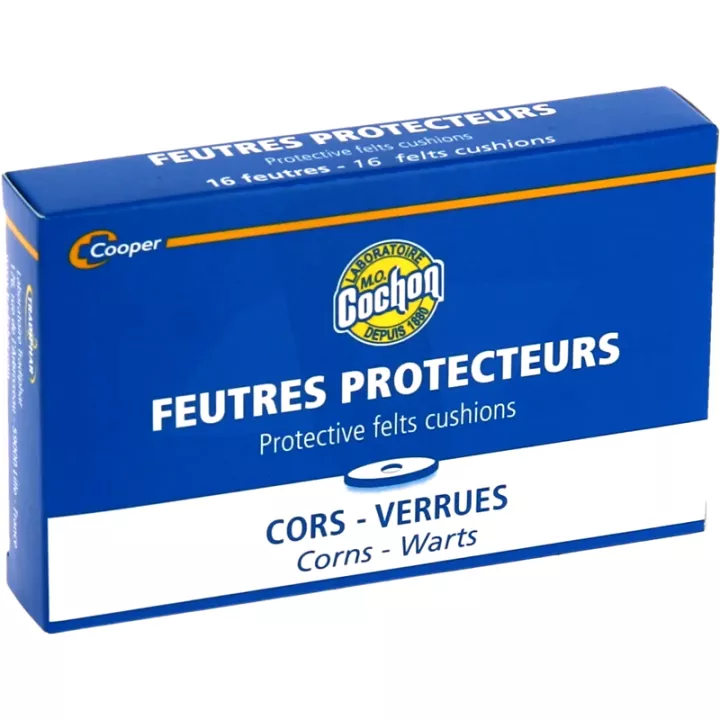What is Elastoplast Protection cors 20 plasters used for?
Elastoplast Protection Cors 20 plasters soothe corns, protect them from rubbing and pressure, and relieve pain in sensitive areas between toes and calluses caused by pressure and rubbing. Extremely soft, they stay in place thanks to the adhesive and respect even the most sensitive skin.
Elastoplast Corn Protection 20 plasters: Soothing plasters for corns, calluses and sensitive areas, specially designed for foot care. A callus is a thickening of the surface layer of the skin, the epidermis. In most cases, the callus is located on the sole of the foot, sometimes on the palm of the hand. A benign condition, calluses can nevertheless cause real discomfort when walking, and can even become infected and require surgery.
Elastoplast Protection Cors 20 Pansements is specially designed to soothe corns, protect sensitive areas from rubbing and pressure, and relieve associated pain. Corns, or calluses, are thickenings of the superficial layer of skin, often located on the sole of the foot or palm of the hand. Although generally benign, corns can cause significant discomfort when walking, and require special attention to relieve unpleasant symptoms.
Elastoplast Protection Cors 20 Pansements instantly soothe corns and sensitive areas between the toes, providing fast, lasting relief. The softness of the plasters ensures pleasant contact with the skin, while their effective adhesive holds them in place for optimum protection against rubbing and pressure.
These dressings are specially designed to protect corns and calluses from rubbing and excessive pressure, while offering maximum comfort for users. Their discreet format and high-performance adhesive guarantee a secure hold all day long, enabling corns sufferers to go about their daily activities without discomfort.
Thanks to their practical format, Elastoplast Protection Cors plasters are easy to apply and remove, offering a convenient solution for relieving pain associated with corns and sensitive areas. Their gentle, resistant composition makes them suitable for everyday use, while their hypoallergenic adhesive respects even the most sensitive skin.
In addition to soothing immediate pain, Elastoplast Protection Cors promotes long-lasting healing by protecting corns from friction and pressure that could delay healing. Thanks to their protective and soothing action, these dressings offer effective and lasting relief for people suffering from corns and calluses, enabling them to regain optimum comfort in their daily activities.
We also offer Epitact Coussinets Hallux Valgus Oignon & Douleurs Plantaires, at the best price in our online pharmacy.
How do I use these dressings?
Apply to clean, dry skin, making sure to place the horn in the center. Press firmly for good adhesion.
Give your opinion on the instructions for use and dosage of Elastoplast Protection cors 20 pansements with our partner Verified opinions after your purchase.
Precautions for use
Store in a cool, dry place.
What does it contain?
Box of 20 plasters to soothe corns on feet. One plaster contains 0.04g salicylic acid.
Presentation
Elastoplast comes in a box of 20 dressings.
Our expert pharmacy advice
Unsightly and painful, corns are very common. When shoes are too tight, there is prolonged and repeated rubbing. The skin thickens and hardens in the affected area, forming the corns. Corn dressings provide relief by protecting the skin from friction. They provide temporary relief and then loosen the corns by removing dead skin.
The main cause of corns and calluses is repeated rubbing of the skin on the shoe, but deformities of the foot can also lead to the appearance of corns. In fact, an unbalanced foot or an angular forefoot leads to friction, which encourages corns.
Friction and/or excessive pressure on the bones of the foot thicken the corns by stimulating the production of the epidermis' main protein, keratin.
In addition to the pain andthickening of the skin caused by corns and calluses, they can also lead to claudication, load-shifting which can cause bone and joint disorders, and suppuration due to infection of the bursa located under the corns or under the area of friction.
